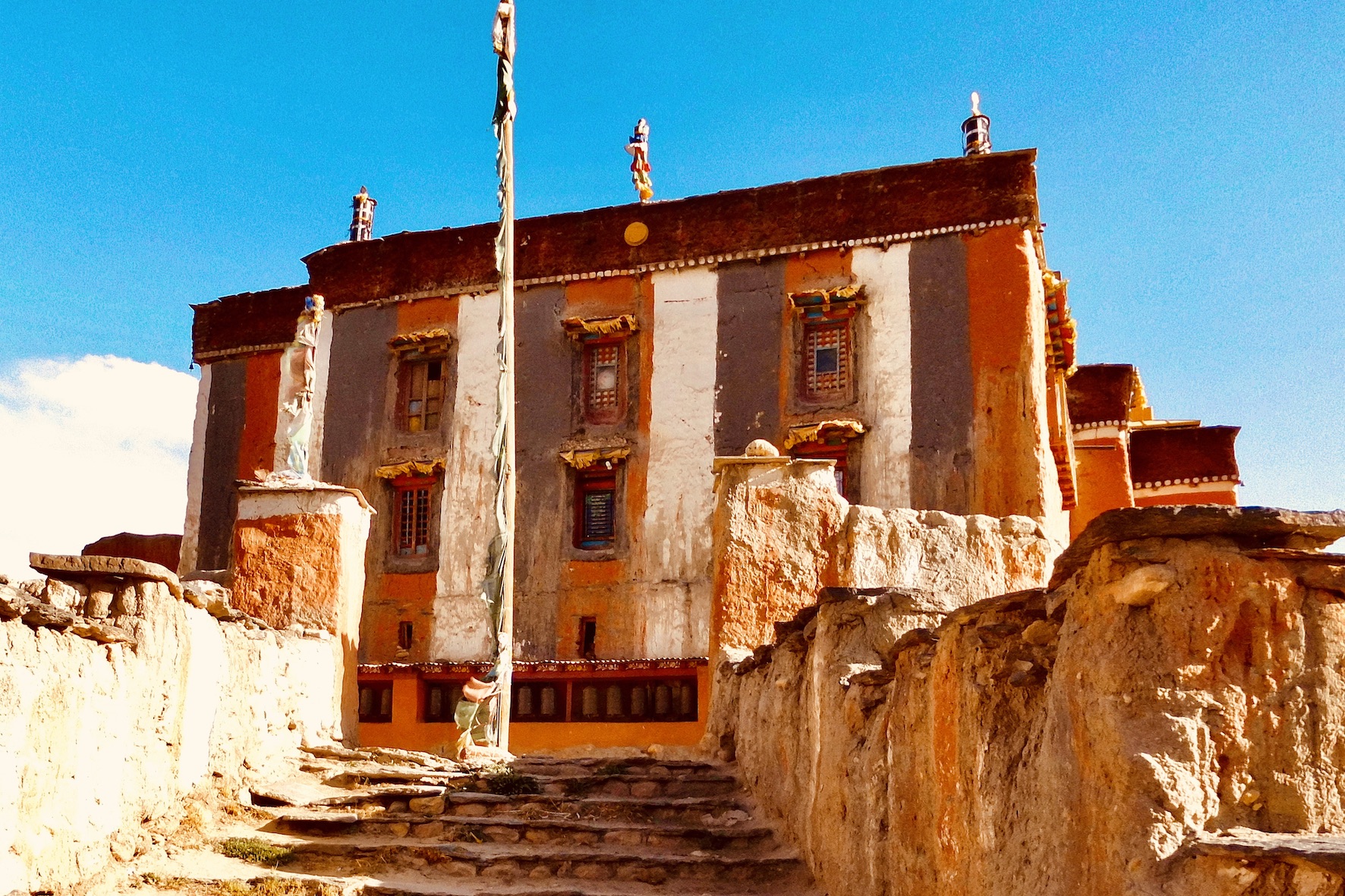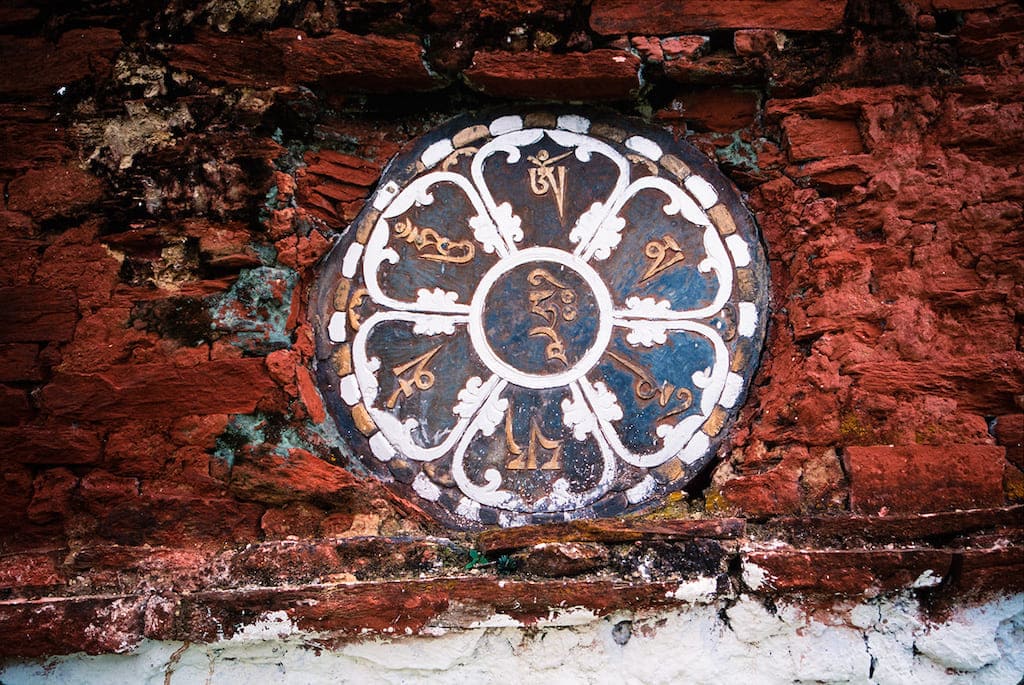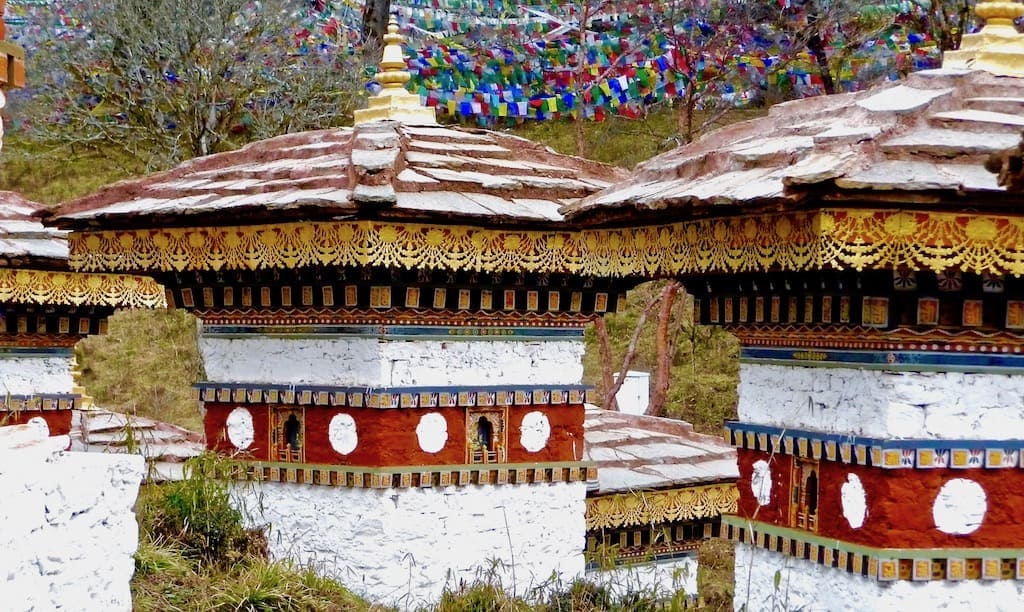You can contact us by e-mail or phone
from uk
01405 862917
outside uk
+44 1405 862917
01405 862917
+44 1405 862917
Gangkar Puensum Trek
ALL MEALS INCLUDED
Duration
Grade
Max Altitude
Walking Days
Accommodation

Trip Overview
A wild and challenging, rarely undertaken Bhutan trek to pay homage to the world’s highest unclimbed peak, Gangkar Puensum (7570m).
Lying on the border with Tibet, there have been unsuccessful attempts to climb Gangkar Puensum, but since then, the Bhutanese have decided that the mountain should not be climbed. So this trek to Gangkar Puensum Base Camp, or really to what would be determined as “base camp” beneath the soaring peak, remains an unspoilt, high mountain wilderness, and what a spectacular amphitheatre of Himalayan giants it is. Many of the side valleys in the higher reaches of the Gangkar Puensum region remain, by and large, unexplored and frequented only by hardy yak herders. This remote and strenuous trek ensures that this is isolation trekking in Bhutan at its very best, with the reward of close-up views of the magnificent Gangkar Puensum for the very few that dare to venture.
Sleeping bags (4-season) will be required for nights spent camping
A wild and challenging, rarely undertaken Bhutan trek to pay homage to the world’s highest unclimbed peak, Gangkar Puensum (7570m).
-
Lying on the border with Tibet, there have been unsuccessful attempts to climb Gangkar Puensum, but since then, the Bhutanese have decided that the mountain should not be climbed. So this trek to Gangkar Puensum Base Camp, or really to what would be determined as “base camp” beneath the soaring peak, remains an unspoilt, high mountain wilderness, and what a spectacular amphitheatre of Himalayan giants it is. Many of the side valleys in the higher reaches of the Gangkar Puensum region remain, by and large, unexplored and frequented only by hardy yak herders. This remote and strenuous trek ensures that this is isolation trekking in Bhutan at its very best, with the reward of close-up views of the magnificent Gangkar Puensum for the very few that dare to venture.
Sleeping bags (4-season) will be required for nights spent camping
Example Itinerary
-
-
Day 1Arrive Paro. Transfer to Thimpu
-
Day 2Overland to Trongsa
-
Day 3Overland via the Yotong La to Jakhar
-
Day 4Commence the Gankgar Puensum trek to Khakthang
-
Day 5Trek to Gophu
-
Day 6A long day to Tsawuu
-
Day 7A shorter walk to Shingo
-
Day 8Trek to Bamurpa
-
Day 9Acclimatisation Day at Bamurpa
-
Day 10Trek to Gangkar Puensum Base Camp
-
Day 11Walking beneath Gangkar Puensum
-
Day 12Descend to Shingo
-
Day 13Trek to Tsampa
-
Day 14Down to Gophu
-
Day 15Back to Jakhar
-
Day 16Fly/Drive to Paro & sightseeing
-
Day 17Taktsang Monastery Trek - Option to add 2 day Bumdra Trek to Taktsang.
-
Day 18Depart Paro
-
-
DAY
1Arrive Paro. Transfer to Thimpu
Arrive at Paro Airport. You’ll be met upon arrival and transferred by private vehicle to your hotel in the Bhutanese capital of Thimpu, around 2 hours from Paro Airport.
Accommodation: Galingkha Hotel or similar, Thimpu
Meals: Dinner
For detailed information, choices and advice for International flight options to Paro, Bhutan - please click hereDAY 1
Arrive Paro. Transfer to Thimpu
Arrive at Paro Airport. You’ll be met upon arrival and transferred by private vehicle to your hotel in the Bhutanese capital of Thimpu, around 2 hours from Paro Airport.
Accommodation: Galingkha Hotel or similar, Thimpu
Meals: Dinner
For detailed information, choices and advice for International flight options to Paro, Bhutan - please click hereDAY
2Overland to Trongsa
It’s a full day's drive of around 7 hours, but it’s a spectacular journey. Firstly, up and over the Dochu La (3,000m) and then down into the Wangdiphodrang and Punakha Valleys. Another high pass to cross, this time the Pele La (3350 m), and then a seemingly endless descent to Trongsa. Here, you won’t be able to miss the Trongsa Dzong. It’s one of the most important and impressive of all the Dzongs in Bhutan. If you’re up for it, there’s a watch tower above the Dzong, from where there are really dramatic views from the roof top.
Accommodation: Raven Crown Resort Hotel or similar, Trongsa
Meals: Breakfast, Lunch, DinnerDAY 2
Overland to Trongsa
It’s a full day's drive of around 7 hours, but it’s a spectacular journey. Firstly, up and over the Dochu La (3,000m) and then down into the Wangdiphodrang and Punakha Valleys. Another high pass to cross, this time the Pele La (3350 m), and then a seemingly endless descent to Trongsa. Here, you won’t be able to miss the Trongsa Dzong. It’s one of the most important and impressive of all the Dzongs in Bhutan. If you’re up for it, there’s a watch tower above the Dzong, from where there are really dramatic views from the roof top.
Accommodation: Raven Crown Resort Hotel or similar, Trongsa
Meals: Breakfast, Lunch, DinnerDAY
3Overland via the Yotong La to Jakhar
Another day, another road pass, this time the 3,350-metre Yotong La, which leads down into the stunning Bumthang Valley. It’s a much shorter drive today of around 3–4 hours, so there’s plenty of time for stops along the way at points of interest as well as a stroll in the Jakhar area to stretch the legs.
Accommodation: Wangdicholing Lodge or similar, Jakhar
Meals: Breakfast, Lunch, DinnerDAY 3
Overland via the Yotong La to Jakhar
Another day, another road pass, this time the 3,350-metre Yotong La, which leads down into the stunning Bumthang Valley. It’s a much shorter drive today of around 3–4 hours, so there’s plenty of time for stops along the way at points of interest as well as a stroll in the Jakhar area to stretch the legs.
Accommodation: Wangdicholing Lodge or similar, Jakhar
Meals: Breakfast, Lunch, DinnerDAY
4Commence the Gankgar Puensum trek to Khakthang
A short drive (the last for a while, promise) of around 30 minutes to Tangbi, where your trek support crew will be waiting for you. Once the pack animals are all loaded, it’s time to start your trek properly. Heading along the river, you walk upstream through typical rural farmlands for a couple of hours, perhaps three, and cross the river by way of a bridge at Nathe. Things soon become a bit more foresty and less rural, and a further half hour of walking brings you to camp (2640m). There’s a small army checkpost here to check the permits of the local people wishing to go into the Chamkha Cha Valley to collect cordyceps, a fungus that is highly prized due to its believed medicinal value. Walking time is approx. 5–6 hours.
Accommodation: Camp, Khakhtang Army Camp
Meals: Breakfast, Lunch, DinnerFIND OUT MORE ABOUT FULLY SUPPORTED CAMPING IN BHUTAN
DAY 4
Commence the Gankgar Puensum trek to Khakthang
A short drive (the last for a while, promise) of around 30 minutes to Tangbi, where your trek support crew will be waiting for you. Once the pack animals are all loaded, it’s time to start your trek properly. Heading along the river, you walk upstream through typical rural farmlands for a couple of hours, perhaps three, and cross the river by way of a bridge at Nathe. Things soon become a bit more foresty and less rural, and a further half hour of walking brings you to camp (2640m). There’s a small army checkpost here to check the permits of the local people wishing to go into the Chamkha Cha Valley to collect cordyceps, a fungus that is highly prized due to its believed medicinal value. Walking time is approx. 5–6 hours.
Accommodation: Camp, Khakhtang Army Camp
Meals: Breakfast, Lunch, DinnerFIND OUT MORE ABOUT FULLY SUPPORTED CAMPING IN BHUTAN
DAY
5Trek to Gophu
It’s now really all about ascent as you head up through dense forest with the now-raging river ever-present below. Reaching the confluence of two mountain rivers at around 2950 m, you cross via a bridge and continue on what is mostly a gradual ascent up to Gophu Camp at 3275m. A longer walking day of around 7 hours.
Accommodation: Camp, Gophu
Meals: Breakfast, Lunch, DinnerDAY 5
Trek to Gophu
It’s now really all about ascent as you head up through dense forest with the now-raging river ever-present below. Reaching the confluence of two mountain rivers at around 2950 m, you cross via a bridge and continue on what is mostly a gradual ascent up to Gophu Camp at 3275m. A longer walking day of around 7 hours.
Accommodation: Camp, Gophu
Meals: Breakfast, Lunch, DinnerDAY
6A long day to Tsawuu
Things are becoming increasingly spectacular as you follow the trail that climbs up by the river. Ahead are some pretty impressive cliff faces, and at times it can be a bit muddy and tricky underfoot. But, as you gain height, you’re entering the alpine zone, and there are open meadows used by the yak herders for grazing. Continuing on this all-ascent day, the trees begin to thin out more. Reaching a small temple known as Tsampa, camp is a further hour's walk at the tiny settlement of Tsawuu, although in some instances camping here is sometimes not possible, so you’d camp near the temple. Altitude at camp: 3850 m; walking time: a good 8 hrs.
Accommodation: Camp, Tsawuu/Tsampa
Meals: Breakfast, Lunch, DinnerDAY 6
A long day to Tsawuu
Things are becoming increasingly spectacular as you follow the trail that climbs up by the river. Ahead are some pretty impressive cliff faces, and at times it can be a bit muddy and tricky underfoot. But, as you gain height, you’re entering the alpine zone, and there are open meadows used by the yak herders for grazing. Continuing on this all-ascent day, the trees begin to thin out more. Reaching a small temple known as Tsampa, camp is a further hour's walk at the tiny settlement of Tsawuu, although in some instances camping here is sometimes not possible, so you’d camp near the temple. Altitude at camp: 3850 m; walking time: a good 8 hrs.
Accommodation: Camp, Tsawuu/Tsampa
Meals: Breakfast, Lunch, DinnerDAY
7A shorter walk to Shingo
Today you’ll be going over the 4,000-metre mark, and so the following two days of trekking are much shorter by necessity and in order to help with acclimatisation. It is still mostly uphill, though. But the good news is that some Himalayan peaks that form the border with Tibet come into view. Reaching a chorten, you’re now in open mountain country, and there’s a little bit of downhill to the river and a collection of yak herder huts known as Gewathang. You’ll also encounter a series of yak gates on this section, which lead across open meadow lands as well as through juniper and rhoododendron forests, with the odd boulder to negotiate. Camp is by another collection of herders huts by the river at Shingo (4210m). Walking time is around four and a half hours.
Accommodation: Camp, Shingo
Meals: Breakfast, Lunch, DinnerDAY 7
A shorter walk to Shingo
Today you’ll be going over the 4,000-metre mark, and so the following two days of trekking are much shorter by necessity and in order to help with acclimatisation. It is still mostly uphill, though. But the good news is that some Himalayan peaks that form the border with Tibet come into view. Reaching a chorten, you’re now in open mountain country, and there’s a little bit of downhill to the river and a collection of yak herder huts known as Gewathang. You’ll also encounter a series of yak gates on this section, which lead across open meadow lands as well as through juniper and rhoododendron forests, with the odd boulder to negotiate. Camp is by another collection of herders huts by the river at Shingo (4210m). Walking time is around four and a half hours.
Accommodation: Camp, Shingo
Meals: Breakfast, Lunch, DinnerDAY
8Trek to Bamurpa
You will certainly know that you’re well and truly in the heart of yak country, and there are also some fine Himalayan peaks up to 7,000m in view. Welcome to the high Himalayas. Leaving camp, there’s a very short uphill before a short descent and then a more gradual, rising walk into Chamkha Chu Valley. Once again, you pass several collections of yak herder huts, and eventually, after having to walk over bogland, a large open meadow surrounded by gnarly, rock peaks appears. This is as far as you’ll go today. Altitude at camp: 4495 m. Walking time is around 4 hours.
Accommodation: Camp, Bamurpa
Meals: Breakfast, Lunch, DinnerDAY 8
Trek to Bamurpa
You will certainly know that you’re well and truly in the heart of yak country, and there are also some fine Himalayan peaks up to 7,000m in view. Welcome to the high Himalayas. Leaving camp, there’s a very short uphill before a short descent and then a more gradual, rising walk into Chamkha Chu Valley. Once again, you pass several collections of yak herder huts, and eventually, after having to walk over bogland, a large open meadow surrounded by gnarly, rock peaks appears. This is as far as you’ll go today. Altitude at camp: 4495 m. Walking time is around 4 hours.
Accommodation: Camp, Bamurpa
Meals: Breakfast, Lunch, DinnerDAY
9Acclimatisation Day at Bamurpa
Although it’s been a long and gradual height gain, it makes good sense to build in an acclimatisation day today. Namely a day to climb higher and then descend back down again. Gangkar Puensum can wait until tomorrow, although you may get a glimpse today if you choose to walk and not rest up at camp. One option would be to hike up to a collection of stone-built herders huts known as Buutrsum. It’s a sort of “pick your way” route, as the trail is pretty much nonexistent. Basically, you would follow the river further upstream towards a glacial moraine and around the 4800m mark. The reward is a great view of Melunghi Gang and the top of Gangkar Puensum. It’s around a 6-hour return trip to camp, but up here there’s always the option to wander somewhere else in this pretty spectacular mountain valley, most of which remains largely unknown to all but the hardy yak herders.
Accommodation: Camp, Bamurpa
Meals: Breakfast, Lunch, DinnerDAY 9
Acclimatisation Day at Bamurpa
Although it’s been a long and gradual height gain, it makes good sense to build in an acclimatisation day today. Namely a day to climb higher and then descend back down again. Gangkar Puensum can wait until tomorrow, although you may get a glimpse today if you choose to walk and not rest up at camp. One option would be to hike up to a collection of stone-built herders huts known as Buutrsum. It’s a sort of “pick your way” route, as the trail is pretty much nonexistent. Basically, you would follow the river further upstream towards a glacial moraine and around the 4800m mark. The reward is a great view of Melunghi Gang and the top of Gangkar Puensum. It’s around a 6-hour return trip to camp, but up here there’s always the option to wander somewhere else in this pretty spectacular mountain valley, most of which remains largely unknown to all but the hardy yak herders.
Accommodation: Camp, Bamurpa
Meals: Breakfast, Lunch, DinnerDAY
10Trek to Gangkar Puensum Base Camp
Seeing the world’s highest unclimbed peak has been the principle objective of this trek, but already you’ll have realised that it is so much more than that. What could be considered Gangkar Puensum Base Camp? Your aim today is to reach a very large, open valley beneath the mountain. However, you may get wet, as from camp there’s a river to cross and no bridge. This glacial fed river is not surprisingly, very cold. Sorry about that, that’s the remote Himalayas for you. Having waded through the not really difficult to cross river and then down to some huts by Bamurpa, you then climb up to a prayer flagged ridge and traverse for a while. In around 2hrs you reach another herders site. There’s still more ascent as you walk up to a sort of pass at around the 5,000m mark and from here you should hope for some gobsmacking views of Gangkar Puensum. It’s now only a short walk to camp (4995m) by a trio of herders shelters. Walking time approx. 5hrs.
Accommodation: Camp, Zhegephu
Meals: Breakfast, Lunch, DinnerDAY 10
Trek to Gangkar Puensum Base Camp
Seeing the world’s highest unclimbed peak has been the principle objective of this trek, but already you’ll have realised that it is so much more than that. What could be considered Gangkar Puensum Base Camp? Your aim today is to reach a very large, open valley beneath the mountain. However, you may get wet, as from camp there’s a river to cross and no bridge. This glacial fed river is not surprisingly, very cold. Sorry about that, that’s the remote Himalayas for you. Having waded through the not really difficult to cross river and then down to some huts by Bamurpa, you then climb up to a prayer flagged ridge and traverse for a while. In around 2hrs you reach another herders site. There’s still more ascent as you walk up to a sort of pass at around the 5,000m mark and from here you should hope for some gobsmacking views of Gangkar Puensum. It’s now only a short walk to camp (4995m) by a trio of herders shelters. Walking time approx. 5hrs.
Accommodation: Camp, Zhegephu
Meals: Breakfast, Lunch, DinnerDAY
11Walking beneath Gangkar Puensum
You could start heading back down today, but after all the effort to get here and the fact that it is simply one of the most spectacular mountain amphitheatres in the world, it would be almost madness to leave and not explore a little more. One option is to climb to get better views and head up onto a ridge and further up to around the 5400m mark. Looking back down to the valley, you’ll see a series of tiny, scattered lakes as well as breathtaking mountain scenery and the realisation that “not many people come here”. There aren’t really any trails here, which is hardly surprising as it’s not a frequently visited location like, say, EBC, ABC, or the like in Nepal. So, with your guide, you can certainly choose other possibilities to enjoy the magnificent scenery. There are other side valleys to explore, and you can be sure that very few people have explored them.
Accommodation: Camp, Zhegephu
Meals: Breakfast, Lunch, DinnerDAY 11
Walking beneath Gangkar Puensum
You could start heading back down today, but after all the effort to get here and the fact that it is simply one of the most spectacular mountain amphitheatres in the world, it would be almost madness to leave and not explore a little more. One option is to climb to get better views and head up onto a ridge and further up to around the 5400m mark. Looking back down to the valley, you’ll see a series of tiny, scattered lakes as well as breathtaking mountain scenery and the realisation that “not many people come here”. There aren’t really any trails here, which is hardly surprising as it’s not a frequently visited location like, say, EBC, ABC, or the like in Nepal. So, with your guide, you can certainly choose other possibilities to enjoy the magnificent scenery. There are other side valleys to explore, and you can be sure that very few people have explored them.
Accommodation: Camp, Zhegephu
Meals: Breakfast, Lunch, DinnerDAY
12Descend to Shingo
It's time to begin retracing your footsteps, and today you’ll descend. Crossing the Shingo Bridge, tonight’s camp is a few minutes further in a forest clearing (4075m). Walking time: approx. 6 hours.
Accommodation: Camp, Nr. Shingo Bridge
Meals: Breakfast, Lunch, DinnerDAY 12
Descend to Shingo
It's time to begin retracing your footsteps, and today you’ll descend. Crossing the Shingo Bridge, tonight’s camp is a few minutes further in a forest clearing (4075m). Walking time: approx. 6 hours.
Accommodation: Camp, Nr. Shingo Bridge
Meals: Breakfast, Lunch, DinnerDAY
13Trek to Tsampa
Probably the easiest day of the entire trek. Mostly downhill with some minor ascents to Tsampa (3720m). As it’s a walk of under 4 hours, you could spend more time at the monastery here.
Accommodation: Camp, Tsampa
Meals: Breakfast, Lunch, DinnerDAY 13
Trek to Tsampa
Probably the easiest day of the entire trek. Mostly downhill with some minor ascents to Tsampa (3720m). As it’s a walk of under 4 hours, you could spend more time at the monastery here.
Accommodation: Camp, Tsampa
Meals: Breakfast, Lunch, DinnerDAY
14Down to Gophu
Again, mostly downhill trekking today as far as Gophu (3275m). Around 5–6 hours walking.
Accommodation: Camp, Gophu
Meals: Breakfast, Lunch, DinnerDAY 14
Down to Gophu
Again, mostly downhill trekking today as far as Gophu (3275m). Around 5–6 hours walking.
Accommodation: Camp, Gophu
Meals: Breakfast, Lunch, DinnerDAY
15Back to Jakhar
Retracing your steps all the way back to Khaktang in around 5–6 hours of walking it’s time to say a sad “goodbye” to your trek support crew, whom hopefully by now are your good friends and have supported you well. At Khaktang, a private vehicle will take you down to Jakhar, where a bed and a warm shower will now be welcome if not a somewhat strange experience.
Accommodation: Wangdicholing Lodge or similar, Jakhar
Meals: Breakfast, Lunch, DinnerDAY 15
Back to Jakhar
Retracing your steps all the way back to Khaktang in around 5–6 hours of walking it’s time to say a sad “goodbye” to your trek support crew, whom hopefully by now are your good friends and have supported you well. At Khaktang, a private vehicle will take you down to Jakhar, where a bed and a warm shower will now be welcome if not a somewhat strange experience.
Accommodation: Wangdicholing Lodge or similar, Jakhar
Meals: Breakfast, Lunch, DinnerDAY
16Fly/Drive to Paro & sightseeing
While it is just a short flight to Paro from Jakhar and subject to being able to secure tickets for the flight (a challenge at times in itself), the flight itself is highly weather dependent. Thus, it may be necessary to drive back to Paro. Subject to the flight arrival time, it may be possible to enjoy an afternoon of sightseeing in Paro. Highlights include the National Museum and the amazing Paro Dzong.
Accommodation: Tenzinling Hotel or similar, Paro
Meals: Breakfast, Lunch, DinnerDAY 16
Fly/Drive to Paro & sightseeing
While it is just a short flight to Paro from Jakhar and subject to being able to secure tickets for the flight (a challenge at times in itself), the flight itself is highly weather dependent. Thus, it may be necessary to drive back to Paro. Subject to the flight arrival time, it may be possible to enjoy an afternoon of sightseeing in Paro. Highlights include the National Museum and the amazing Paro Dzong.
Accommodation: Tenzinling Hotel or similar, Paro
Meals: Breakfast, Lunch, DinnerDAY
17Taktsang Monastery Trek - Option to add 2 day Bumdra Trek to Taktsang.
You can’t really come to Bhutan without seeing the Tiger's Nest. The Machu Picchu of Bhutan is Taktsang Monastery, and today you’ll visit it. It’s actually a stiff 2-hour walk up through woodland and a rather steep climb of around 350 m. Thankfully, there’s a teahouse at one of the classic Taktsang Monastery view points where you can rest and refresh before a further 30 minutes of climbing brings you to Takstang (3110m) itself. On the final climb, you pass what is probably the most famous view point, which looks directly across to the monastery. It’s usually possible to enter the monastery, but if there’s something going on at the monastery (religious or VIP visit), then it may not be possible. Heading steeply down, a descent of around 100m leads into a gorge before climbing back up to the main monastery gate, from which it’s down to the valley floor and your ride “home”. Walking time is around 4-5 hours, with around 750m of ascent and descent. It’s actually quite a challenging walk to get your iconic photo’s of what is probably Bhutan’s most famous site.
Alternatively this can also be extended to become a 2 day trek known as the Bumdra Trek. This hike begins at Sang Choekor Monastery (2800m) near Paro followed by a steep climb of around 2hrs to a ridge and then to Chhoe Chhoe Tse Lakhang and then up through pine forests to Bumdra Monastery (3800m) where you spend the night at fixed camp. Walking time is around 4hrs total with 1000m ascent. There’s also the option to climb Bumdra Peak (2-3hrs return and approx 4000m) for greater Himalayan views.
The following day you would trek from Bumdra to Taktsang Monastery , which takes around 3hrs and then descend on the main Taktsang trail and return to Paro by private vehicle for the night.Accommodation: Tenzinling Hotel or similar, Paro
Meals: Breakfast, Lunch, DinnerDAY 17
Taktsang Monastery Trek - Option to add 2 day Bumdra Trek to Taktsang.
You can’t really come to Bhutan without seeing the Tiger's Nest. The Machu Picchu of Bhutan is Taktsang Monastery, and today you’ll visit it. It’s actually a stiff 2-hour walk up through woodland and a rather steep climb of around 350 m. Thankfully, there’s a teahouse at one of the classic Taktsang Monastery view points where you can rest and refresh before a further 30 minutes of climbing brings you to Takstang (3110m) itself. On the final climb, you pass what is probably the most famous view point, which looks directly across to the monastery. It’s usually possible to enter the monastery, but if there’s something going on at the monastery (religious or VIP visit), then it may not be possible. Heading steeply down, a descent of around 100m leads into a gorge before climbing back up to the main monastery gate, from which it’s down to the valley floor and your ride “home”. Walking time is around 4-5 hours, with around 750m of ascent and descent. It’s actually quite a challenging walk to get your iconic photo’s of what is probably Bhutan’s most famous site.
Alternatively this can also be extended to become a 2 day trek known as the Bumdra Trek. This hike begins at Sang Choekor Monastery (2800m) near Paro followed by a steep climb of around 2hrs to a ridge and then to Chhoe Chhoe Tse Lakhang and then up through pine forests to Bumdra Monastery (3800m) where you spend the night at fixed camp. Walking time is around 4hrs total with 1000m ascent. There’s also the option to climb Bumdra Peak (2-3hrs return and approx 4000m) for greater Himalayan views.
The following day you would trek from Bumdra to Taktsang Monastery , which takes around 3hrs and then descend on the main Taktsang trail and return to Paro by private vehicle for the night.Accommodation: Tenzinling Hotel or similar, Paro
Meals: Breakfast, Lunch, DinnerDAY
18Depart Paro
A private vehicle transfer to Paro Airport for your departing flight.
Meals: Breakfast
Of course, there's no reason to depart today; your Bhutan holiday can be readily tailored.
DAY 18
Depart Paro
A private vehicle transfer to Paro Airport for your departing flight.
Meals: Breakfast
Of course, there's no reason to depart today; your Bhutan holiday can be readily tailored.
IMPORTANT
This is an EXAMPLE ITINERARY and can be customised for you accordingly.
Please consider whether you want your customisable, private trip itinerary to also include CONTINGENCY.
See our ABOUT CONTINGENCY Information
Please CONTACT US to discuss CONTINGENCY and ADDITIONAL ACCLIMATISATION, as well as other CUSTOMISATION POSSIBILITES for your PRIVATE CUSTOM TREK
Price Guide
- $ US 4295
IMPORTANT INFO ABOUT OUR PRICE GUIDES
Prices include the compulsory Bhutan Sustainable Development Fee.
For more, see: BHUTAN TOURIST CHARGES EXPLAINED
What's included
The price shown is for guideline purposes. The price is inclusive of the DAILY SUSTAINABLE DEVELOPMENT FEE, all accommodation described in the detailed itinerary (twin share in hotels), all airport and land transfers, private overland travel, internal flights within the itinerary, full camp crew service (incl. Cook), Porterage on Trek (usually pack animals), and all camping equipment (except sleeping bags). Tents on a twin-share basis all meals as indicated in the itinerary, permits and fees, sightseeing where specified, Bhutan Visa & Tourist Taxes & an english-speaking Bhutanese guide.
B = Breakfast, L= Lunch, and D=Dinner
Don't Forget
We can customise
all our trips.
extend. shorten. upgrade
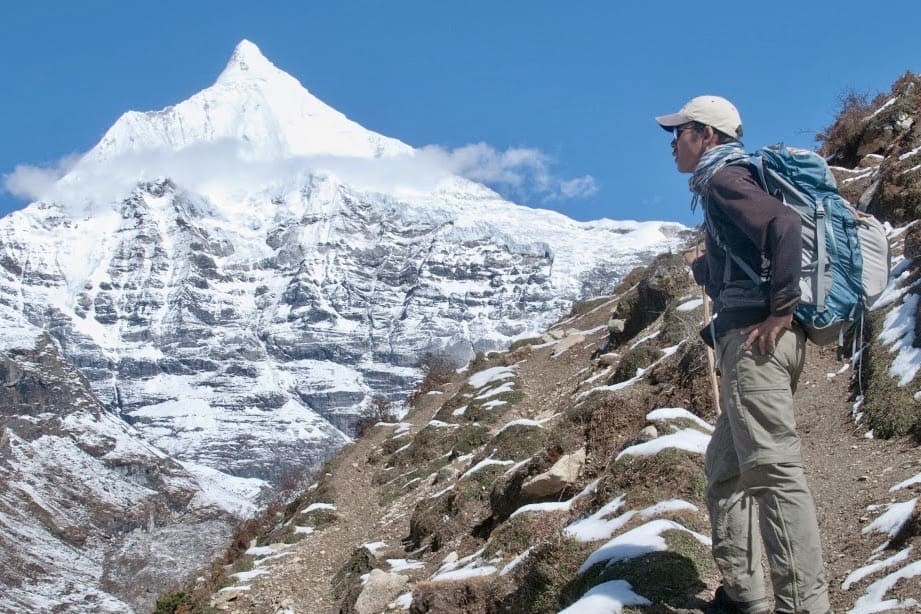
See our Trekking in Bhutan Image Gallery
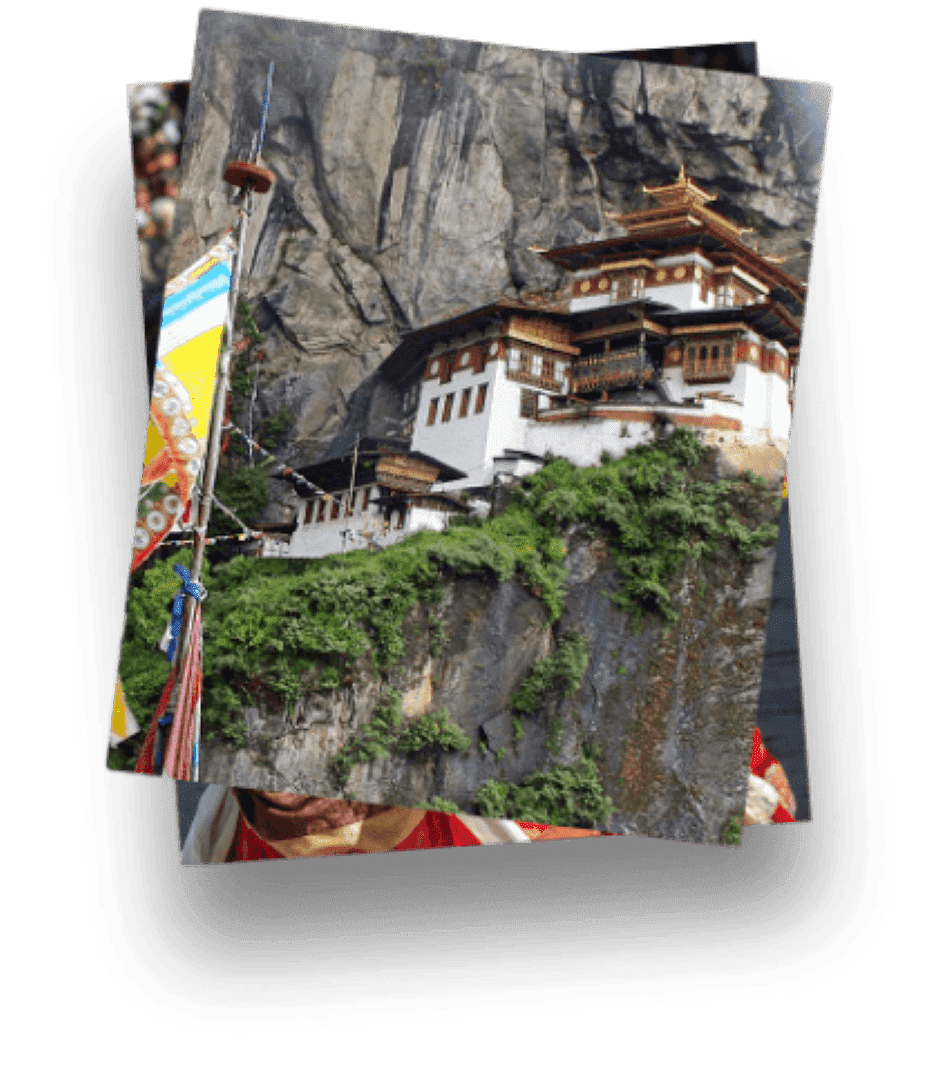
Read our Bhutan Travel Guide

All rights reserved. Snow Cat Travel is a Registered Trade Mark UK 00003289264

